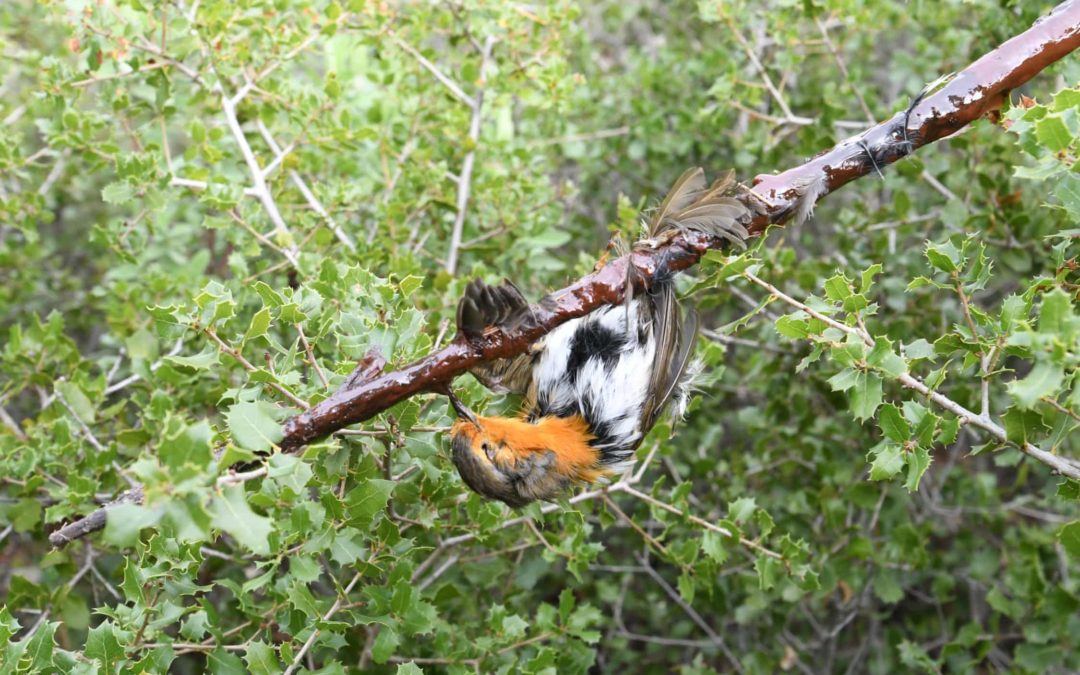SOURCE: The Guardian
DATE: November 30, 2019
SNIP: The Ligue pour la Protection des Oiseaux (LPO) claims French hunters kill an estimated 17 million birds every year – more than any other country – from 64 species. Of these birds, many of which are migratory, 20 are on the International Union for Conservation of Nature’s red list of endangered species in Europe, including the turtle dove, rock ptarmigan, violet thrush and curlew. About 1.4m song thrushes and more than 2m partridges are killed annually. Glue-trappers have permission to catch 42,500 song thrushes and blackbirds this year, half last year’s quota. Last year the French president, Emmanuel Macron, gave in to pressure from the powerful hunting lobby and halved the cost of a hunting licence.
It is early morning in the heart of Provence, and somewhere behind the tall black pine trees a rousing dawn chorus begins. We are crouching out of sight among the rosemary bushes and wild asparagus listening to the melodic musical phrases of song thrushes and blackbirds.
This is Marcel Pagnol country, rich in flora and fauna and of exceptional natural beauty; but there is no sign of the singing birds anywhere in the rustling foliage, trees or sky.
Yves Verilhac, of France’s Ligue pour la Protection des Oiseaux (LPO), knows why. “The singing you can hear is from caged thrushes and blackbirds who are appellants (callers). They’re caught and kept in the dark for months so when they’re taken out into daylight they sing their hearts out and attract other birds.”
He points above the treetops where clusters of sticks attached to vertical poles glisten in the nascent sunlight. “Those are verguettes: sticks covered in glue. The callers call, other birds come, land on a verguette, and they’re stuck. The more they struggle to get away, the more they become stuck.”
The trilling Provençal songbirds are unwitting decoys to lure more birds into a death trap, he says. Once enticed, the birds are either blasted out of the sky by hunters hidden in camouflaged cabins, or find themselves stuck on the sticks.
La chasse à la glu – glue-trapping – was banned in the EU by a 1979 directive, except in special circumstances where it is “controlled, selective and in limited quantities”. Since 1989, France has invoked these circumstances to permit glue-trapping in five south-east departments on the grounds that it is “traditional”.
Bird campaigners, who say the practice is unspeakably cruel, have secretly shot photographs and film that they say proves it is not selective and, worse, poses a threat to endangered species. They have brought numerous legal cases in national and European courts over the past 30 years. All have failed.
“We’ve concrete evidence that sometimes the bird is struggling for 20–30 minutes. To remove them from the sticks, they spray them with petrol or acetone, which is toxic, and if it’s not a species they’re allowed to trap they often throw the bird away like a stone,” Verilhac says.
He stabs at his mobile phone to bring up a photograph of a dead robin, with its unmistakable red breast, stuck by its wing, legs and beak to a glue stick. “This is what they call ‘tradition’, but it’s a practice from the middle ages and barbaric,” he says.

